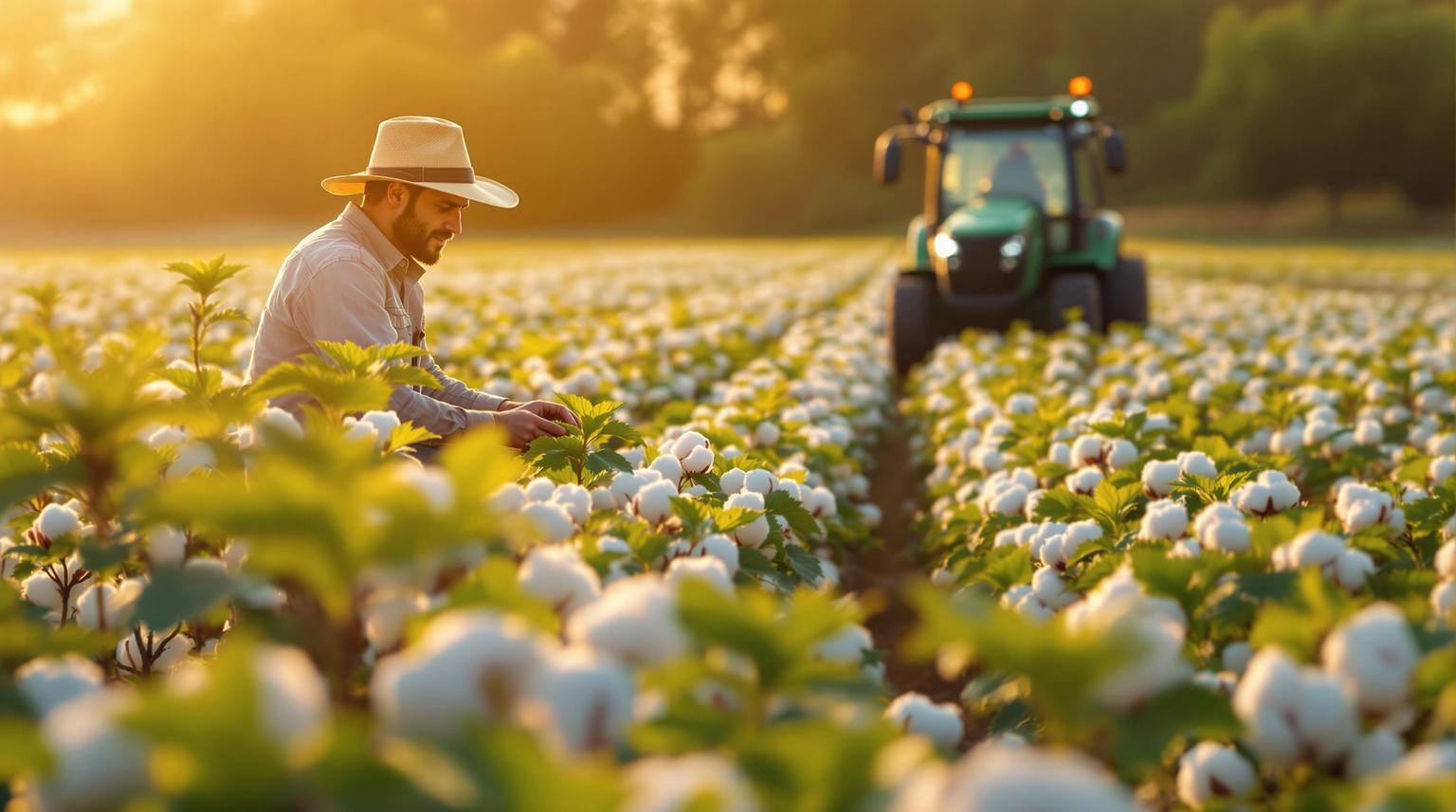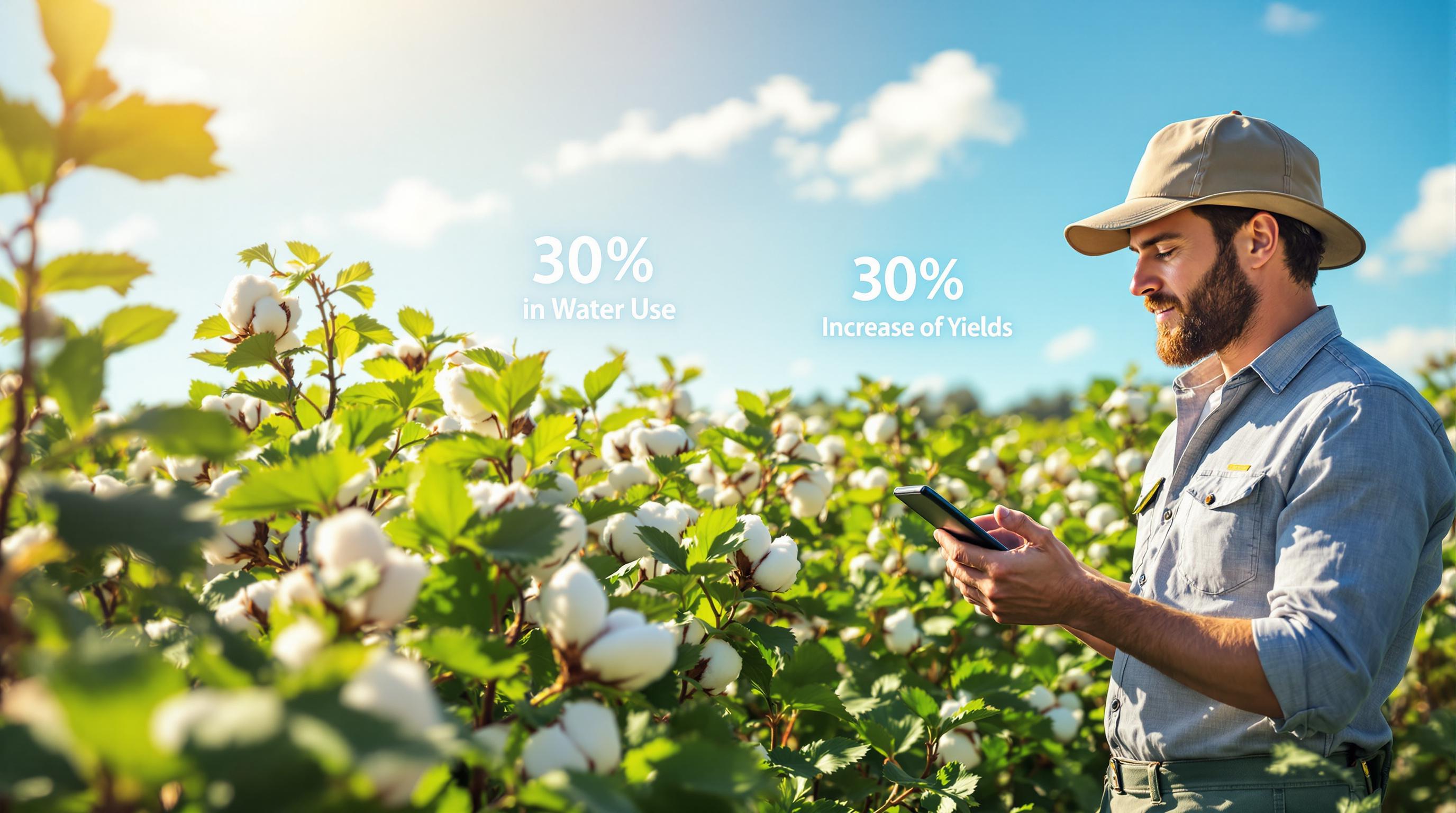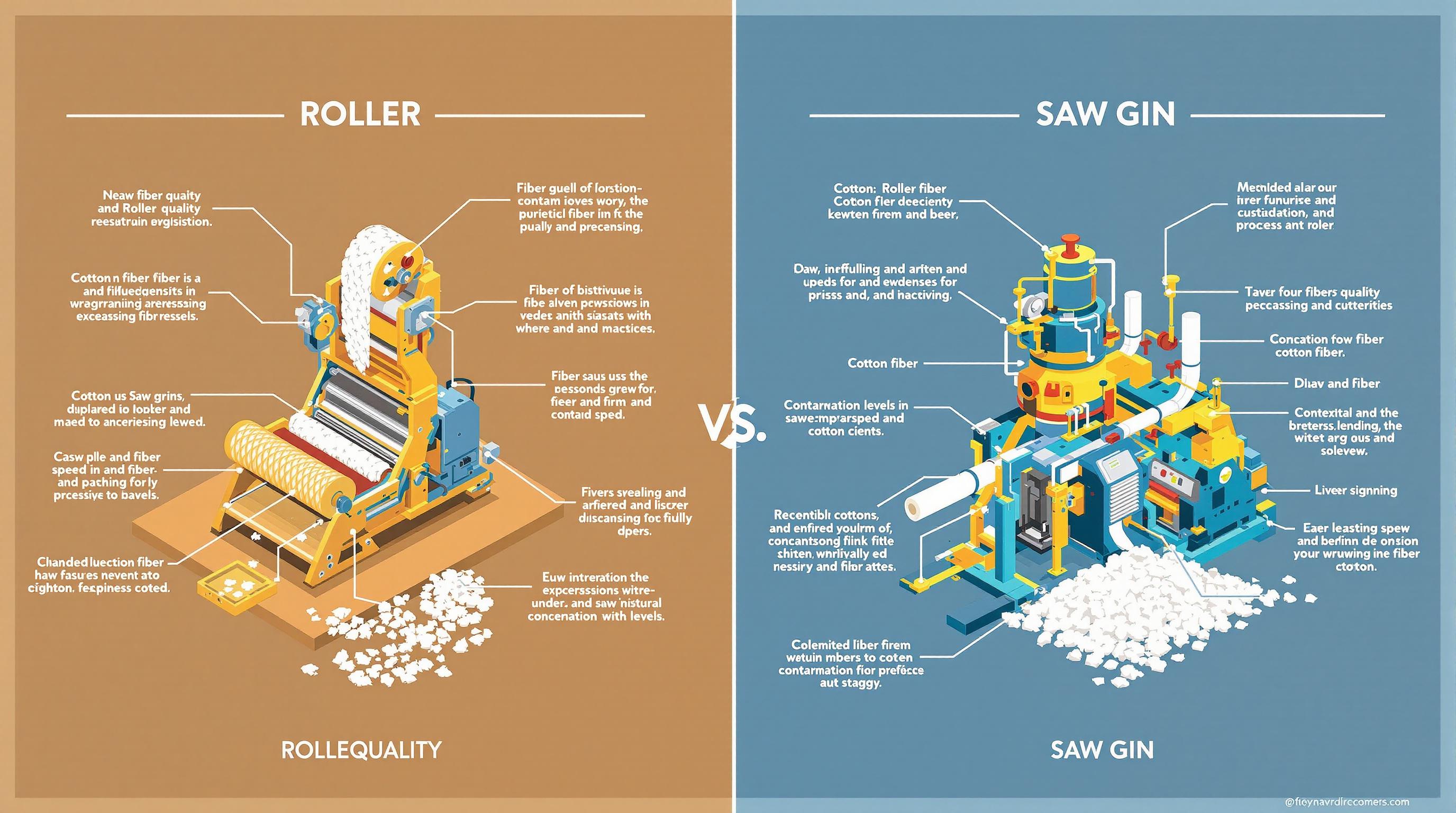Why Remote Sensing is a Game-Changer for Cotton Growers
You've battled unpredictable weather, nutrient imbalances, and pest pressures for years, knowing that early detection of crop stress can make or break a season. Remote sensing offers a powerful way to monitor cotton crop stress from afar, providing data-driven insights that help you intervene before minor issues escalate into yield losses. This technology isn't just for large operations—it's scalable and increasingly accessible, allowing you to optimize inputs and boost efficiency without constant field walks.
Extension studies show that farms using remote sensing can identify stress factors like water deficits or disease onset up to two weeks earlier than traditional scouting, potentially preserving 10-15% of yield in affected areas. By leveraging satellites, drones, or ground sensors, you capture spectral data that reveals plant health invisible to the naked eye. We'll explore practical applications, assuming you're familiar with basics like NDVI indices and variable-rate tech, focusing on how to integrate this into your system for real results.
Understanding the Basics of Remote Sensing in Cotton Fields
Remote sensing detects cotton crop stress by analyzing how plants reflect light across different wavelengths, highlighting anomalies in vigor, moisture, or nutrition. Key platforms include satellites for broad overviews and drones for high-resolution details, each suited to your acreage and budget.
- Spectral Indices: NDVI (Normalized Difference Vegetation Index) measures greenness to spot early nitrogen deficiencies, common in sandy cotton soils where uptake is uneven. Values below 0.6 during squaring signal stress, prompting targeted foliars.
- Thermal Imaging: Infrared cameras detect heat signatures; stressed cotton shows elevated temperatures from poor transpiration. In irrigated fields, this identifies clogged emitters or uneven application, saving 20-30% on water by fixing issues promptly.
- Multispectral vs. Hyperspectral: Multispectral (5-10 bands) suffices for general stress; hyperspectral (hundreds of bands) pinpoints specifics like verticillium wilt, useful in disease-prone belts.
Calibrate tools with ground truthing—pair sensor data with tissue samples for accuracy. Challenges include cloud cover for satellites; mitigate with drone backups during key growth stages.
Selecting the Right Tools for Your Operation
Choosing equipment for monitoring cotton crop stress depends on scale—start simple and scale up based on ROI.
- Drone Systems: Affordable models like the DJI Phantom with multispectral cameras cost $1,500-5,000, covering 100 acres per flight. Software like DroneDeploy processes imagery into stress maps, flagging hotspots for scouting.
- Satellite Services: Free options like Landsat provide bi-weekly data; paid platforms like Farmers Edge offer daily high-res updates for $5-10/acre annually, ideal for large farms tracking seasonal trends.
- Ground Sensors: IoT devices like soil moisture probes integrate with apps for real-time alerts, detecting root zone stress before aerial signs appear.
Factor resolution—drones at 5 cm/pixel spot early thrips damage; satellites at 10m suit broad drought monitoring. Budget tip: Lease during bloom for peak stress periods.
Data Interpretation: Turning Insights into Action
Raw data from remote sensing is worthless without analysis—focus on thresholds and patterns to address cotton crop stress effectively.
- Stress Mapping: Generate zone maps showing variability; low NDVI areas often indicate compaction or nematodes, warranting subsoiling or rotations.
- Trend Analysis: Track indices weekly; declining EVI (Enhanced Vegetation Index) during boll fill signals potassium shortfalls—apply corrections to preserve fiber quality.
- AI Integration: Platforms like Climate FieldView use machine learning to predict stress from historical data, forecasting yield drops with 80% accuracy.
Cross-validate with scouts; false positives from shadows in tall cotton require manual checks. Over-reliance risks missing subtle issues like early Fusarium.
Integrating Remote Sensing with Farm Management Practices
To maximize value, blend remote sensing with existing tools for holistic cotton crop stress management.
- Variable-Rate Applications: Use stress maps to guide VRT fertilizers or pesticides, reducing inputs by 15-25% in heterogeneous fields.
- Irrigation Scheduling: Thermal data informs pivot adjustments, preventing overwatering that exacerbates root rots in clay soils.
- Pest Forecasting: Multispectral detects cooler spots from aphid feeding, enabling spot sprays before widespread damage.
Compatibility matters—export data to John Deere Ops Center for seamless execution. Start pilot fields to quantify benefits like reduced scouting hours.
Case Studies: Real-World Success in Cotton Monitoring
In Texas drylands, a 2,000-acre operation used satellite NDVI to detect drought stress early, adjusting irrigation to save 20% water and lift yields by 150 pounds/acre. Drones helped isolate nematode patches, targeted with bio-nematicides.
Southeast growers integrated thermal imaging for heat stress, identifying variety weaknesses and switching to tolerant lines, cutting losses by 12% during humid summers.
These examples highlight scalability—adapt to your belt's challenges, like salinity in arid zones.
Challenges and Solutions in Adoption
Implementing remote sensing for cotton crop stress isn't seamless—data overload and costs pose hurdles.
- Interpretation Learning Curve: Train via extension workshops; start with user-friendly apps.
- Cost Barriers: Free tools like Google Earth Engine offer basic indices; grants offset drone purchases.
- Weather Dependencies: Supplement satellites with ground sensors for cloudy periods.
Privacy: Use encrypted platforms to protect farm data.
Future Innovations in Cotton Stress Detection
Advancements like hyperspectral drones and AI predictive models will refine remote sensing, forecasting stress from climate data with 90% precision.
Edge computing enables real-time processing, alerting via apps for immediate action.
Stay updated through ag tech networks.
Actionable Takeaways for Your Cotton Farm
To incorporate remote sensing into monitoring cotton crop stress:
- Assess Needs: Identify key stressors like drought or nutrients via soil maps.
- Choose Tools: Start with free satellites; add drones for detail.
- Analyze Data: Set thresholds; integrate with VRT systems.
- Validate: Ground-truth weekly; adjust based on results.
- Scale Up: Expand from pilots with proven ROI.
Using remote sensing to monitor cotton crop stress empowers proactive management.
Remote sensing transforms how you detect and address cotton crop stress, fostering resilient operations.


